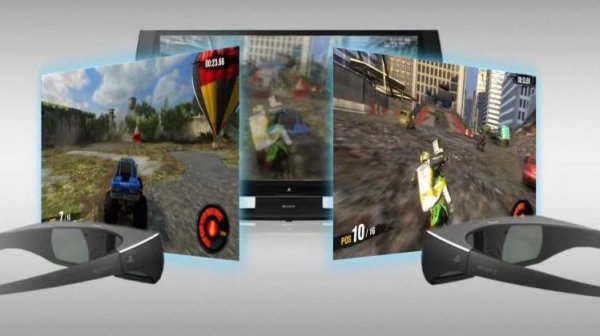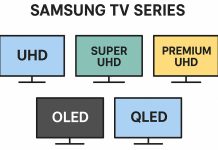SimulView is an innovative display technology that allows two players to share the same TV screen while each seeing a completely different full-screen image. Unlike traditional split-screen modes, where the screen is divided in half, SimulView enables each player to view only their own gameplay in full screen—without seeing the other player’s screen at all. This is made possible using specially designed 3D glasses.
The idea behind SimulView is based on the same principle as stereoscopic 3D. In 3D mode, the TV creates two separate images—one for the left eye and one for the right—giving the viewer a perception of depth. SimulView repurposes this method by showing Player 1’s image through the left-eye channel and Player 2’s image through the right-eye channel. When each player wears glasses that filter out the opposite image, they both see only their own gameplay on the entire screen.
Sony was the first to introduce SimulView commercially, particularly for PlayStation consoles and compatible Bravia 3D TVs.
SimulView in Passive and Active 3D TVs
SimulView works with both passive and active 3D display technologies, but the implementation differs.
With passive 3D TVs, SimulView requires two distinct pairs of polarized glasses. Each pair is configured to filter only one of the two interlaced images. For example, one pair may be polarized to see only the left-eye image, while the other pair filters the right-eye image. These glasses are designed specifically for gaming and do not work with 3D movies, as the polarization is customized to isolate entire frames rather than alternating lines.
It’s technically possible to simulate the effect using standard passive 3D movie glasses by having each player cover one eye—one covers the right, the other the left—but this is not practical for gameplay and is not recommended.
With active 3D TVs, the system uses battery-powered glasses that synchronize with the TV’s refresh rate to alternately block each eye in sync with the displayed image. In SimulView mode, the glasses can be configured to block one of the two alternating frames. This allows one player to see only the left-eye frames and the other player only the right-eye frames. Unlike passive 3D glasses, active SimulView glasses can sometimes be used for both gaming and movie watching, depending on the TV’s software and compatibility.

Limitations and Requirements
To use SimulView, both the TV and the game must support the technology. Not all 3D TVs or video games are compatible with SimulView mode. Game developers need to build in support for SimulView as a display option, typically found in the game’s video or multiplayer settings.
It’s also important to note that SimulView is intended strictly for multiplayer games that support the mode and not for watching movies. The visual separation is designed for competitive or cooperative gaming experiences, giving each player their own view without the limitations of a split screen.






